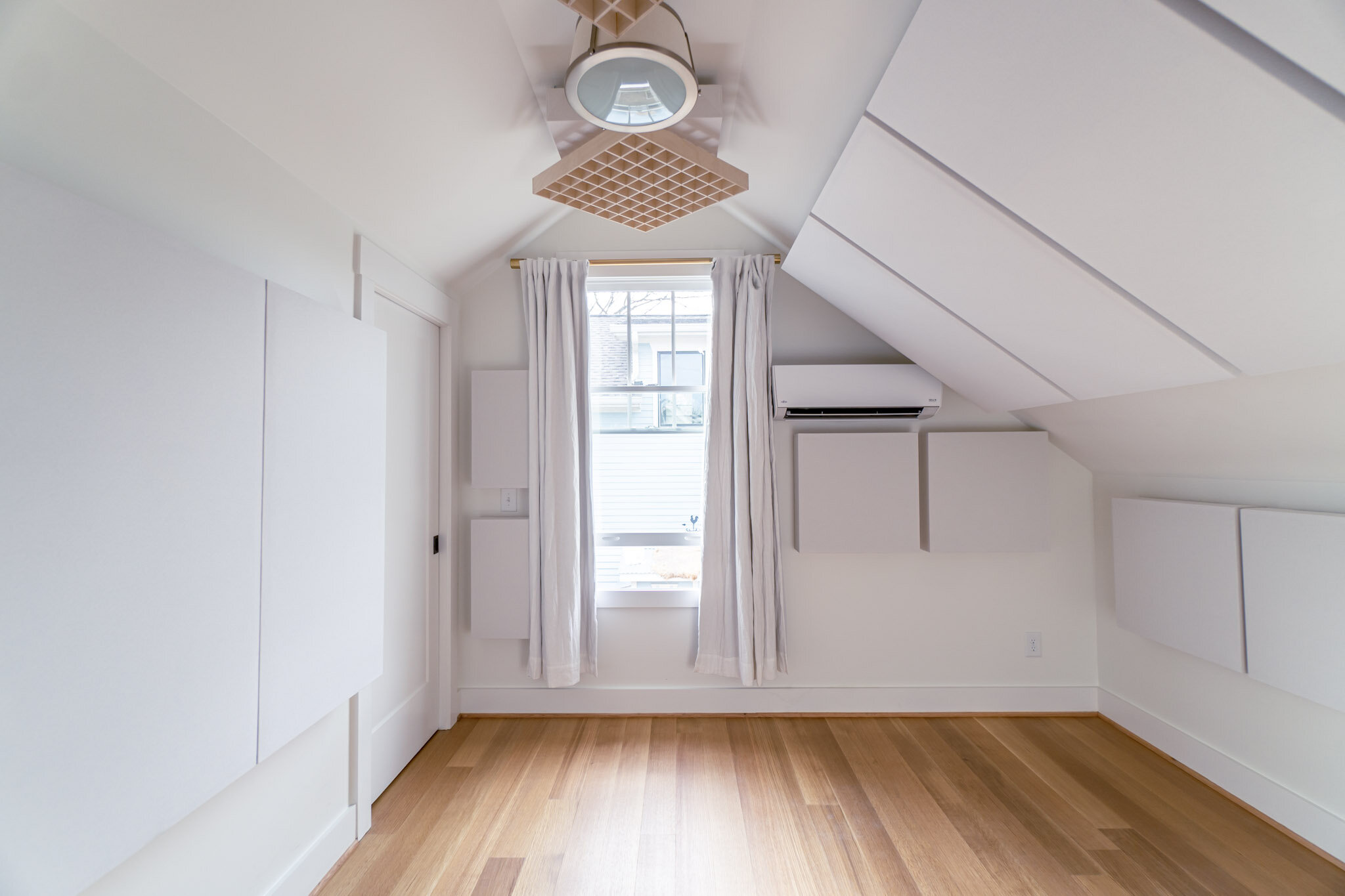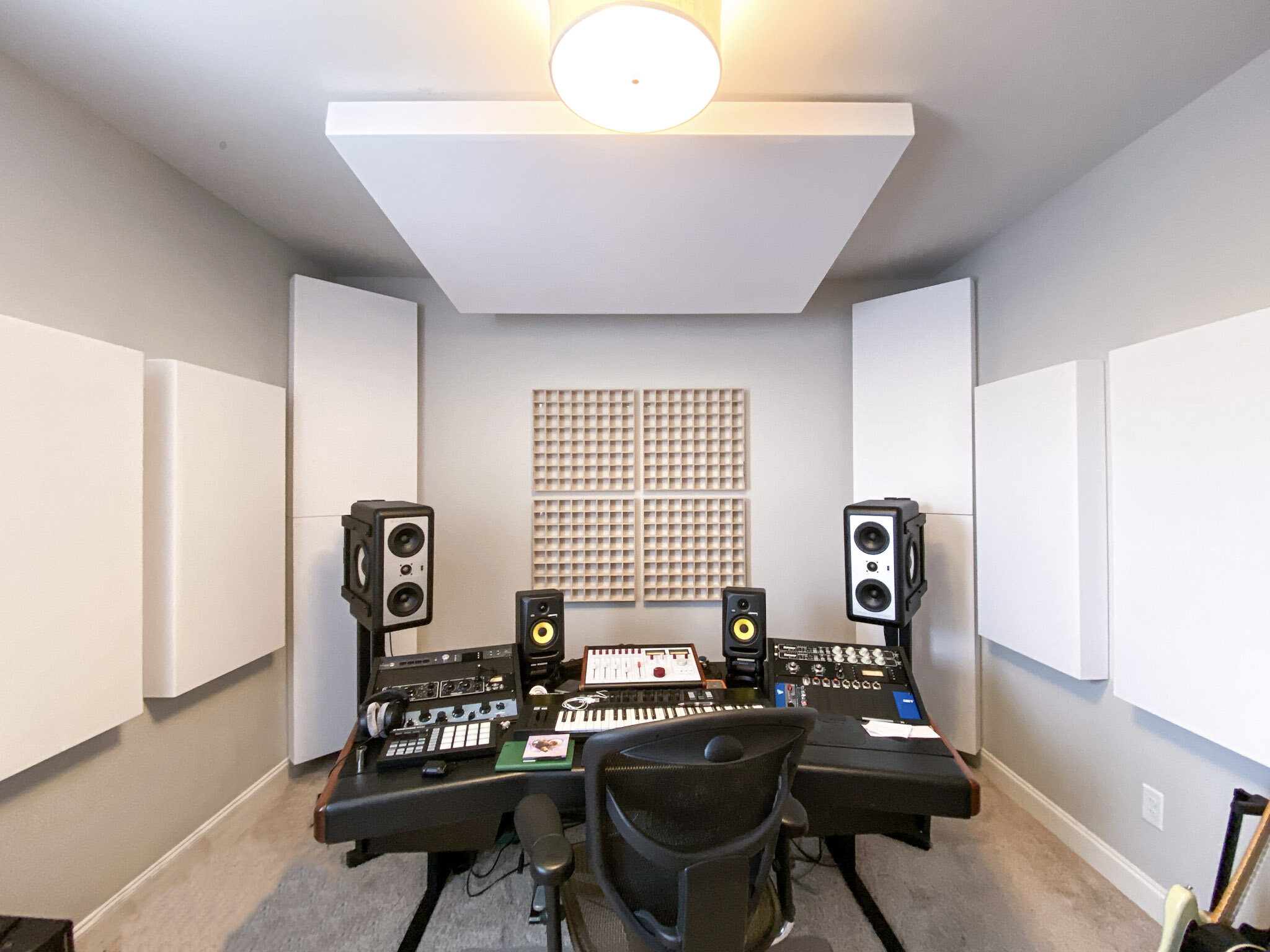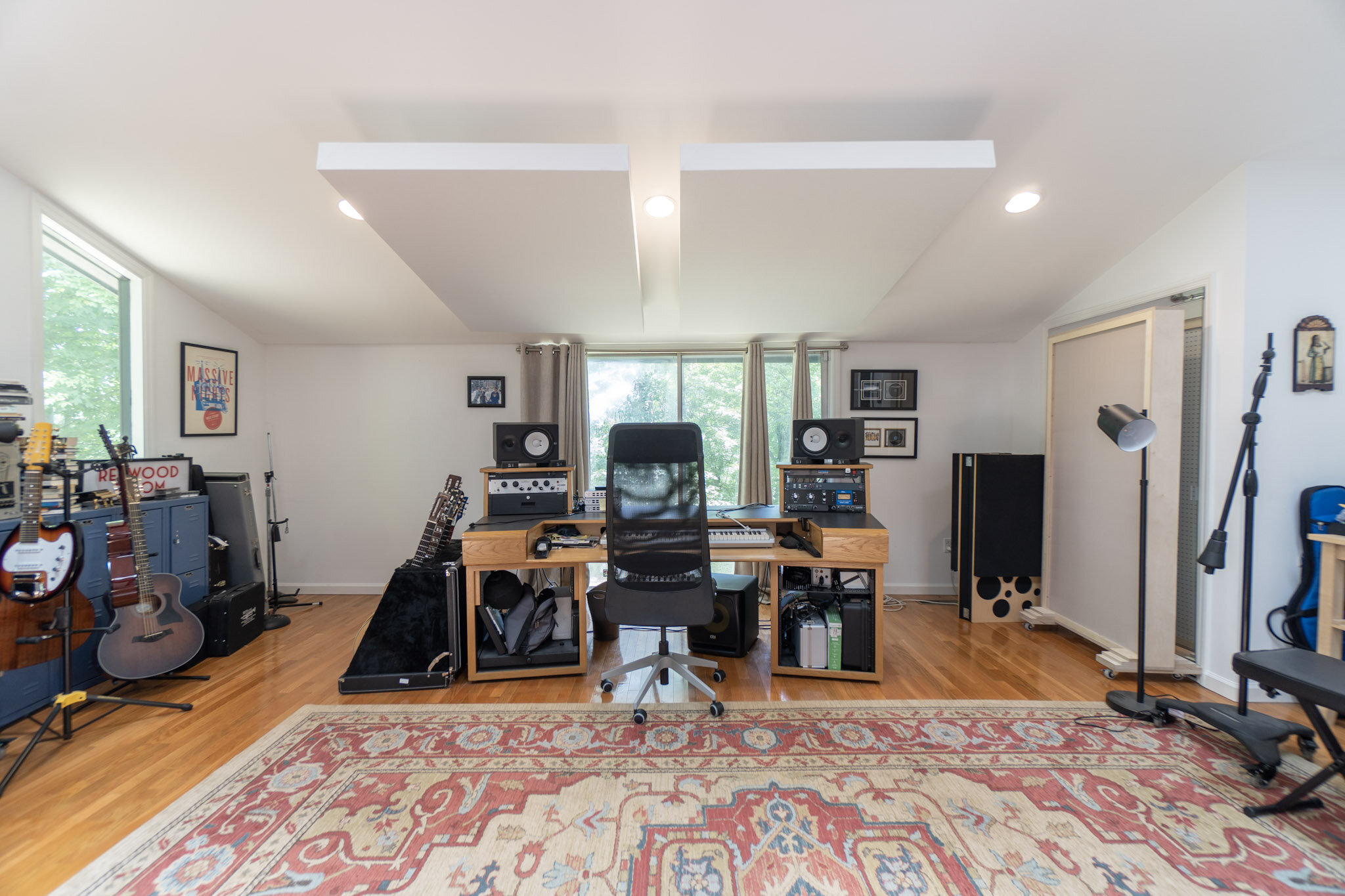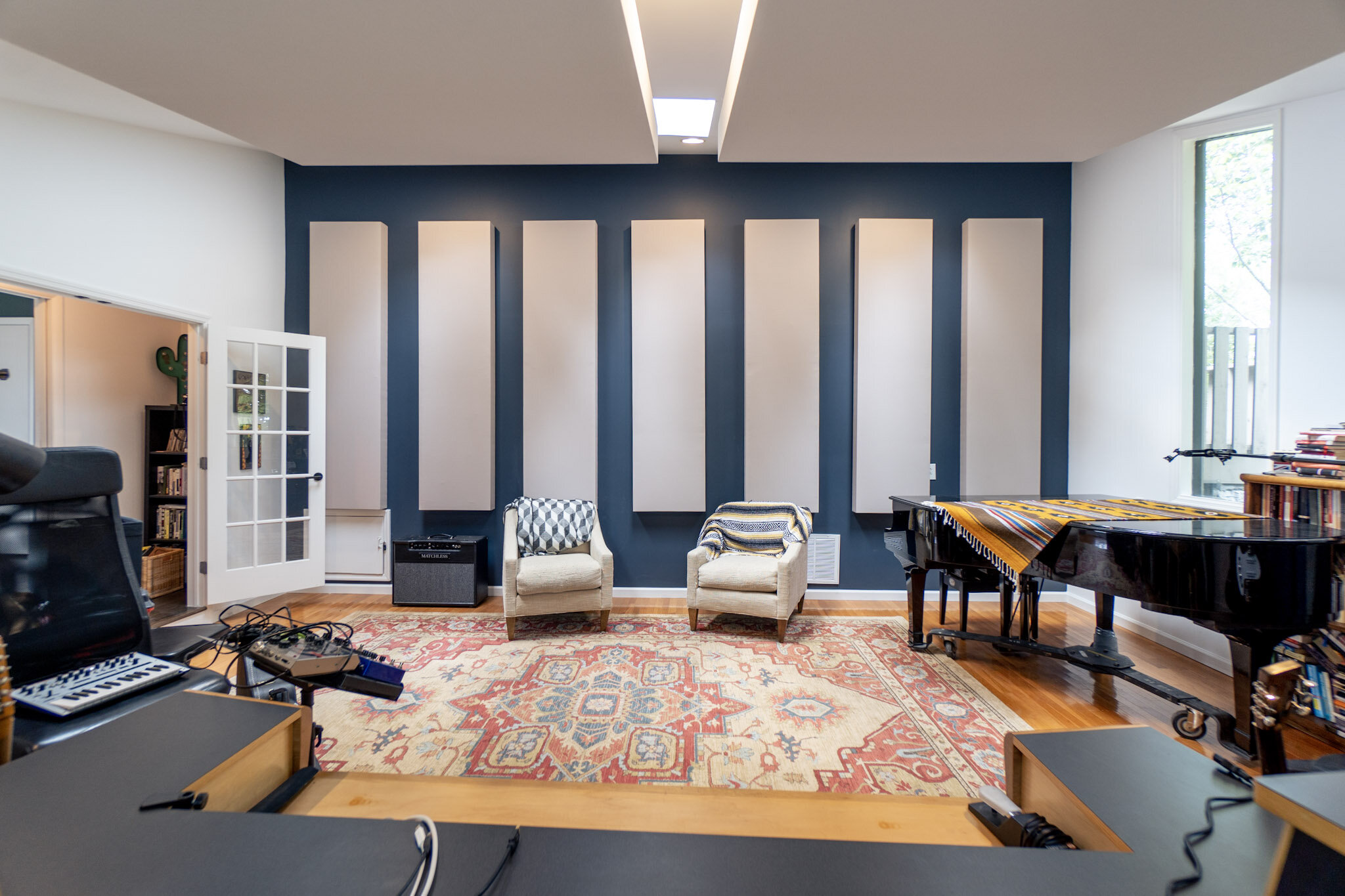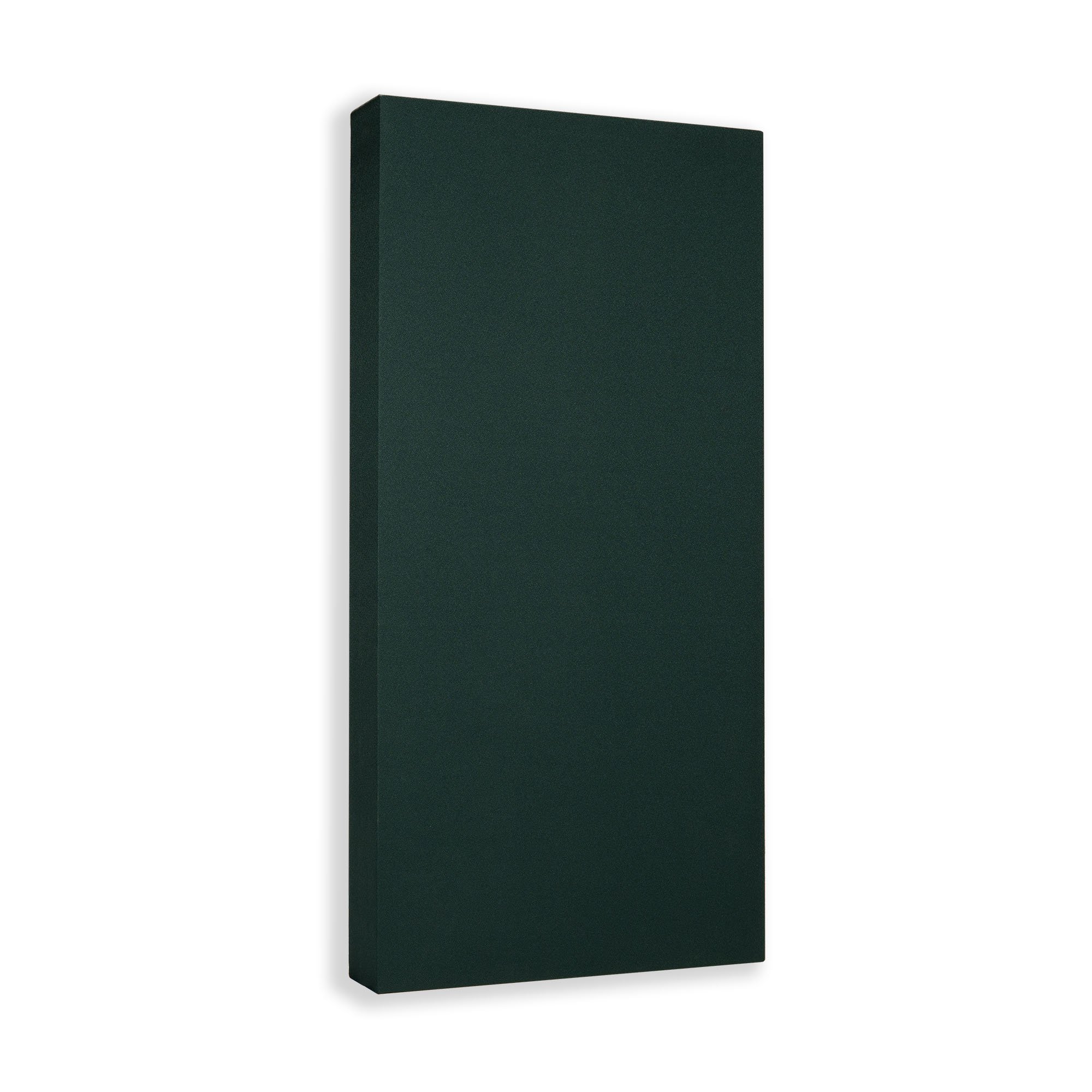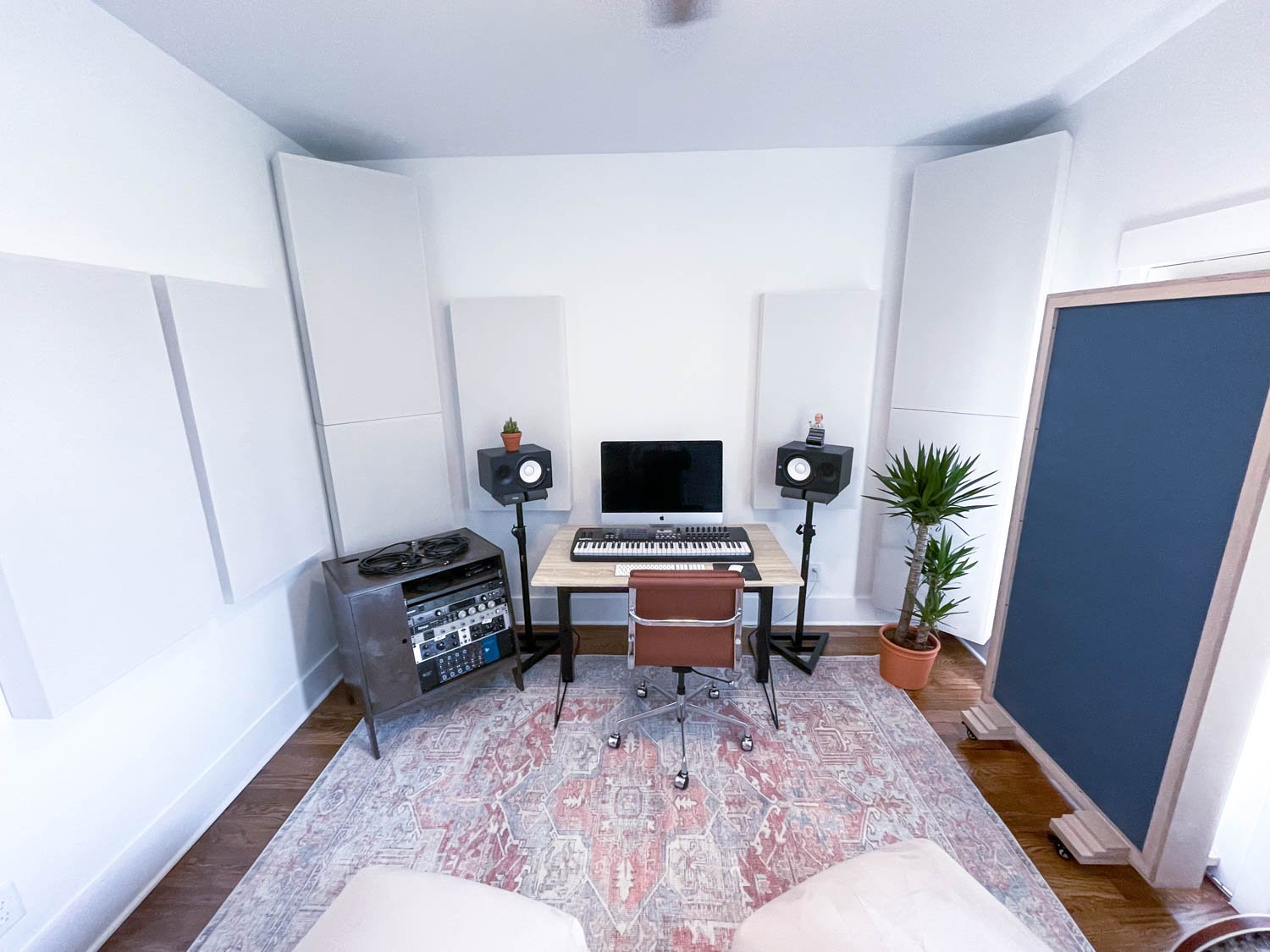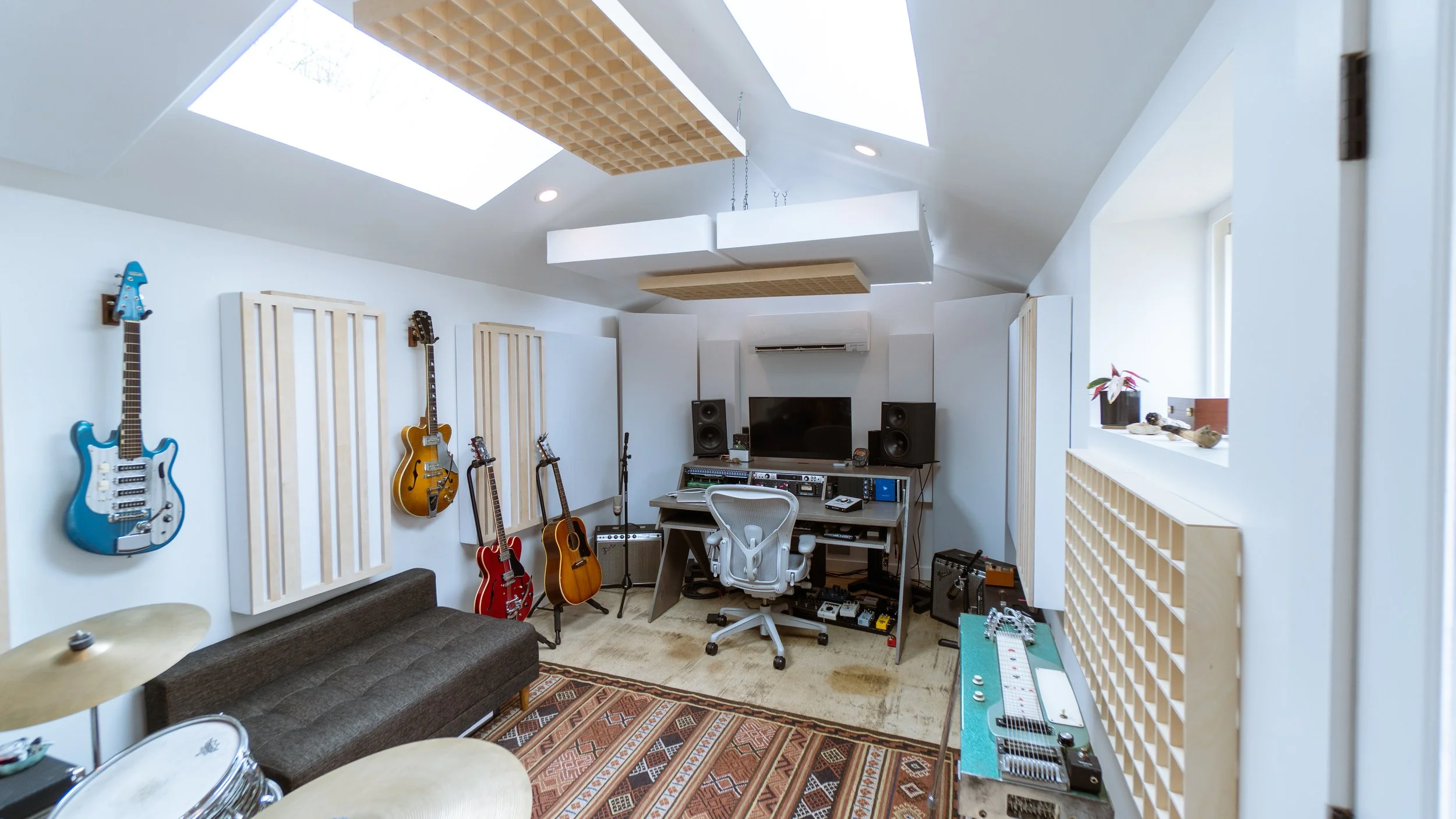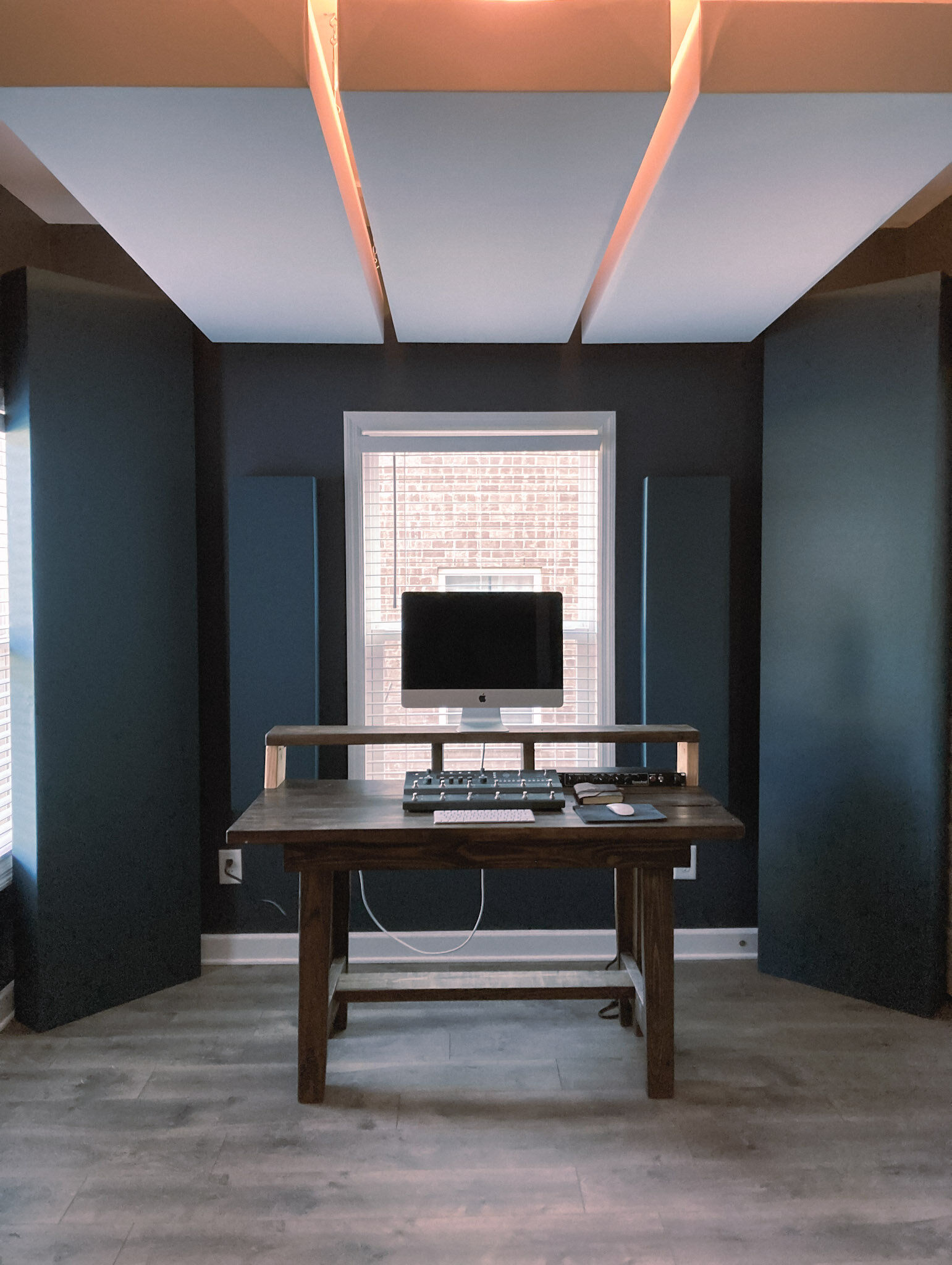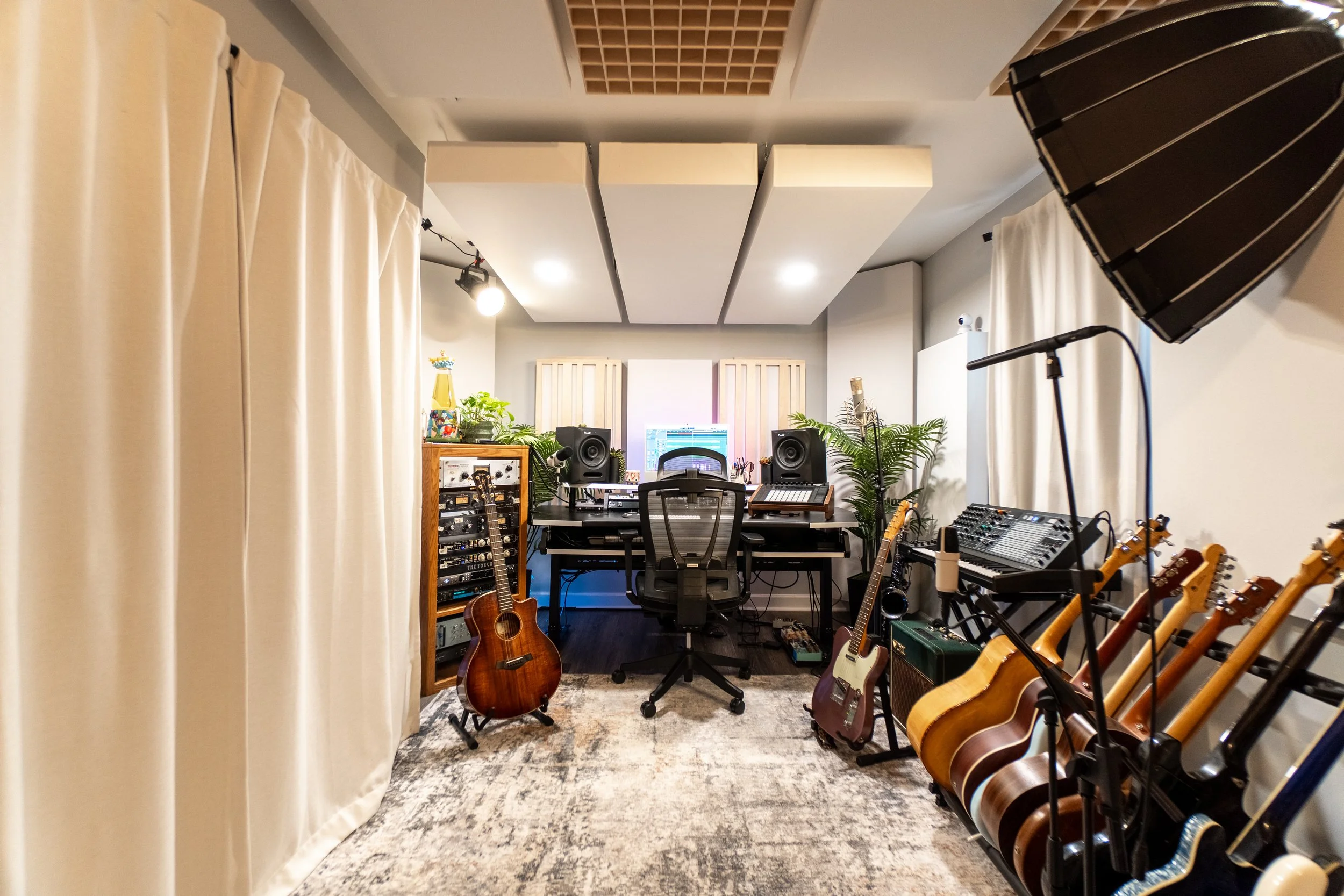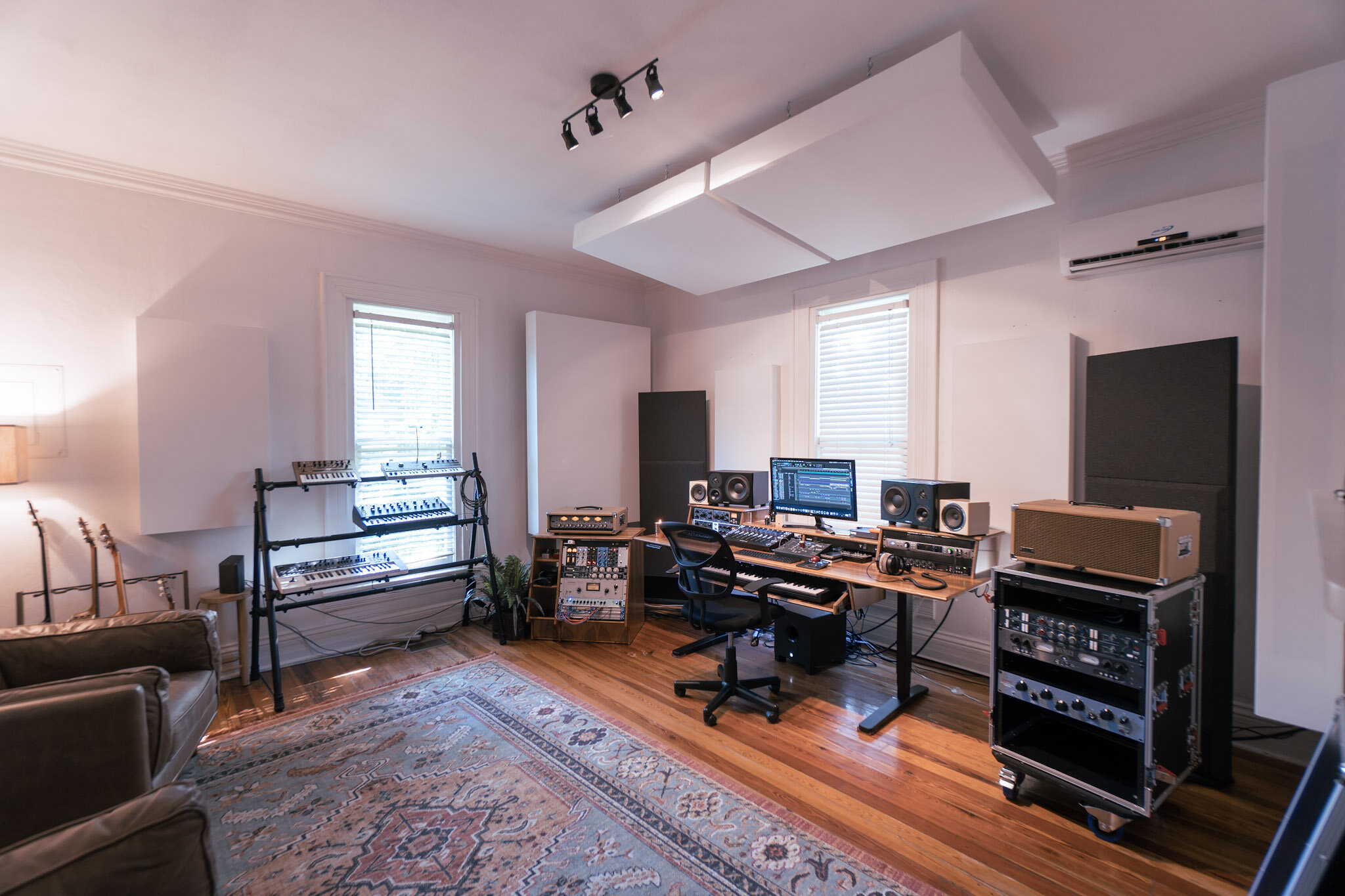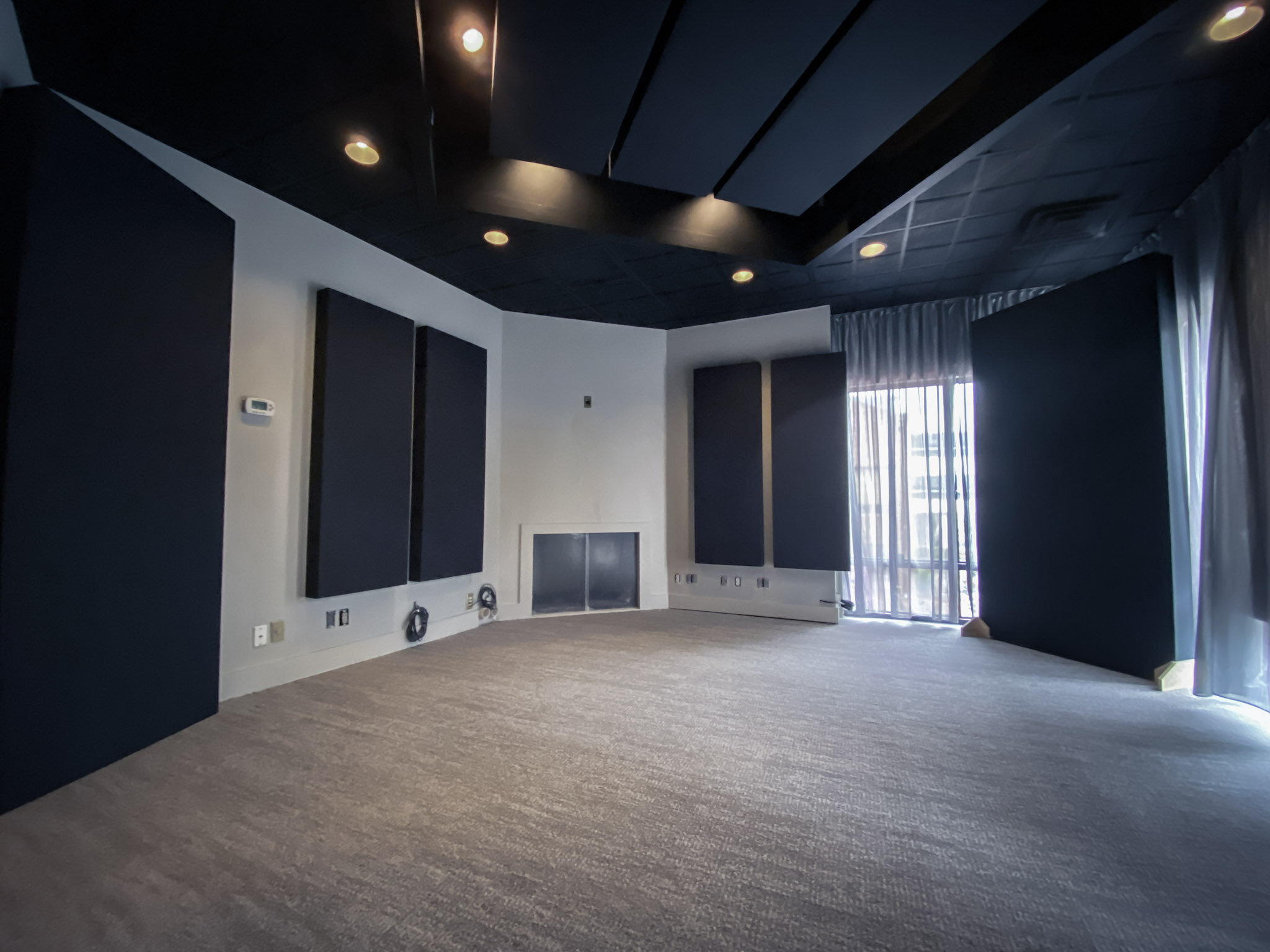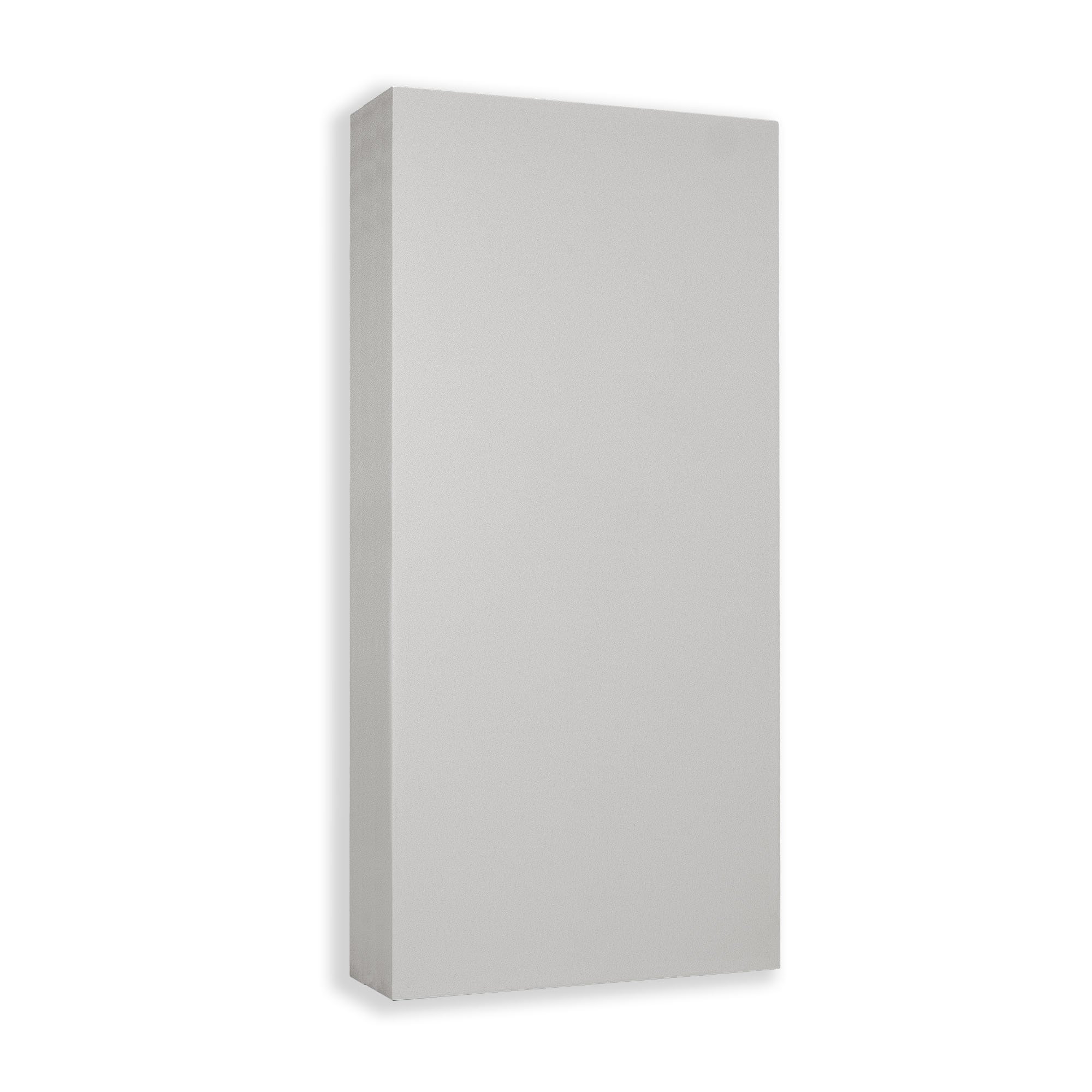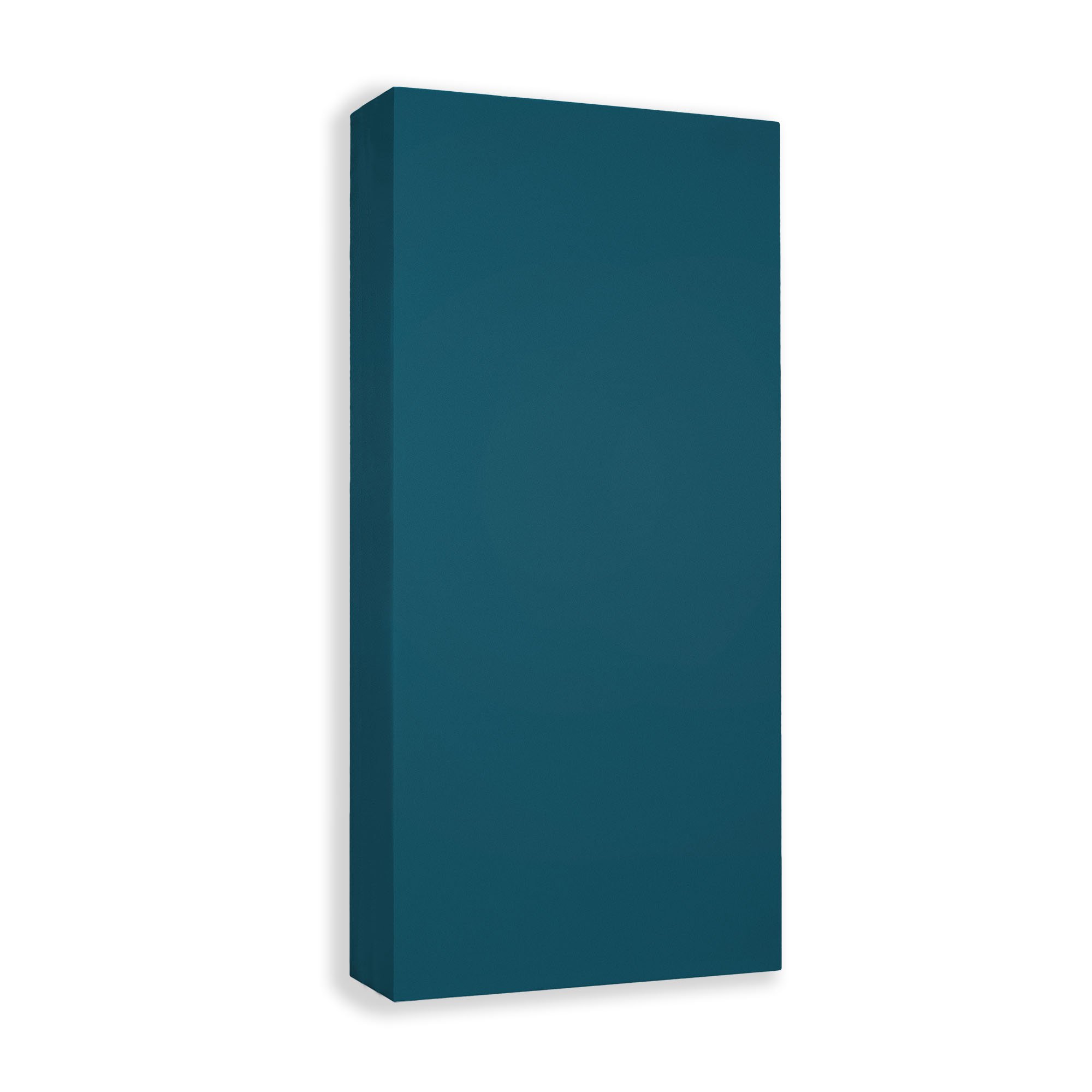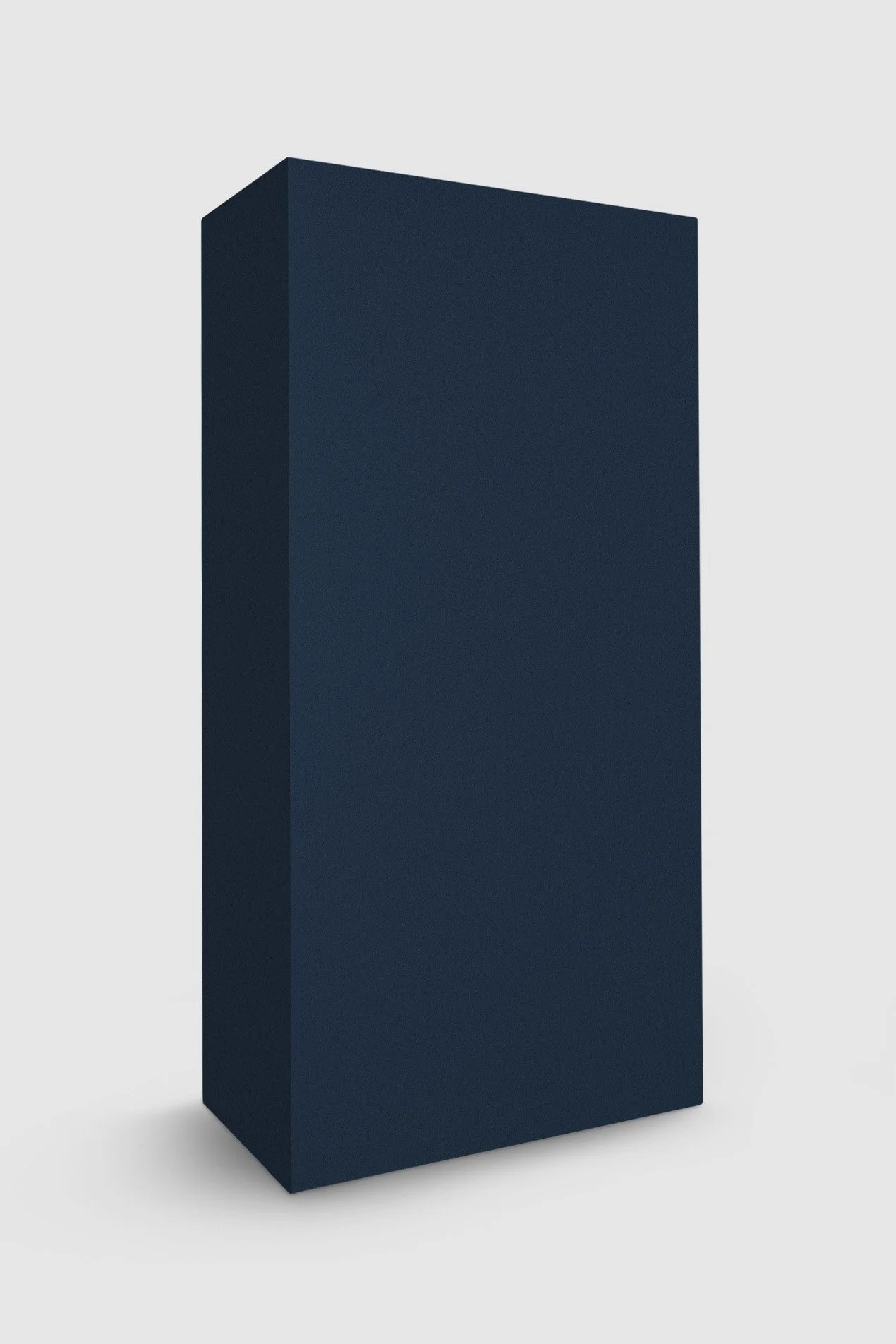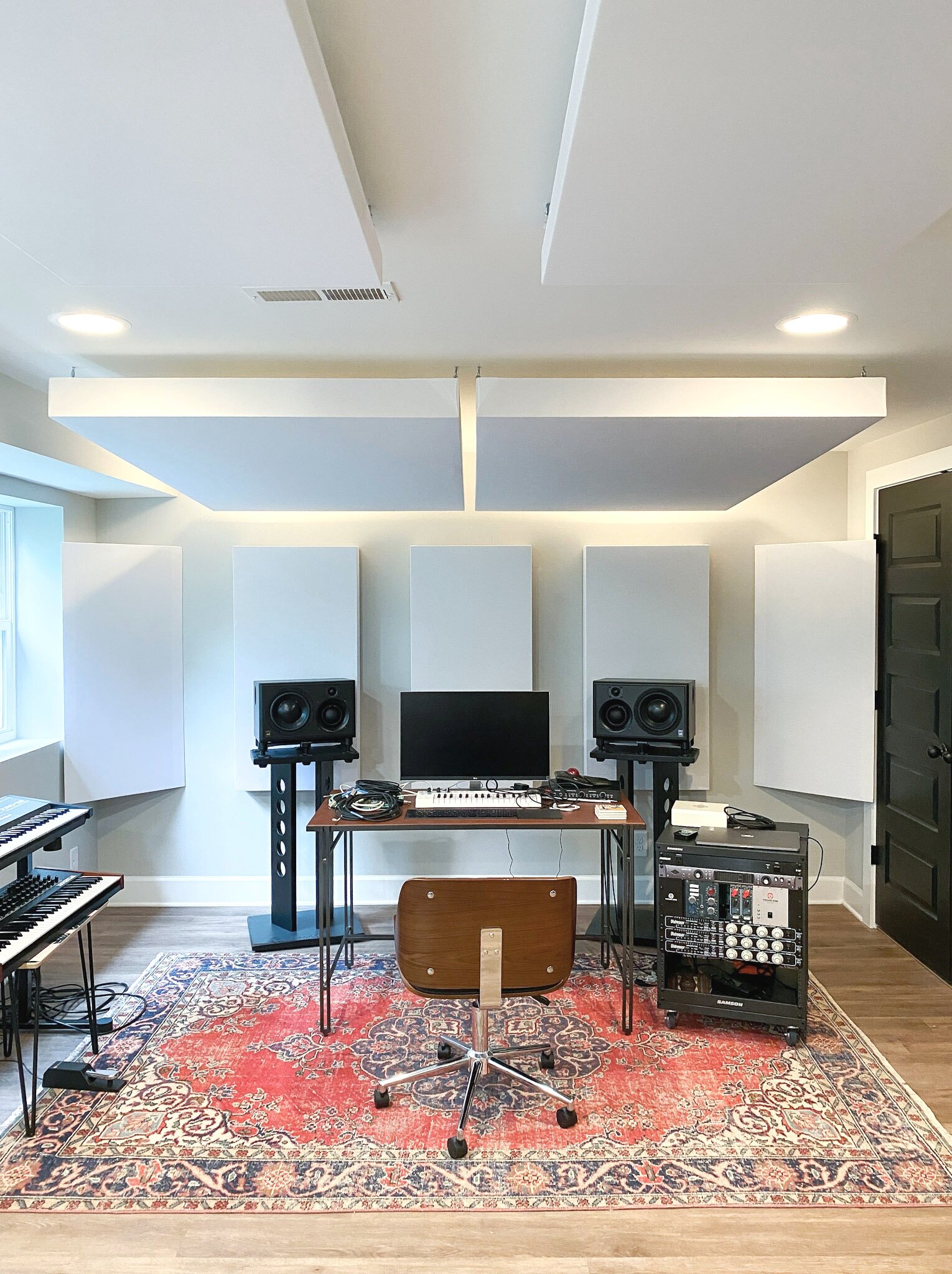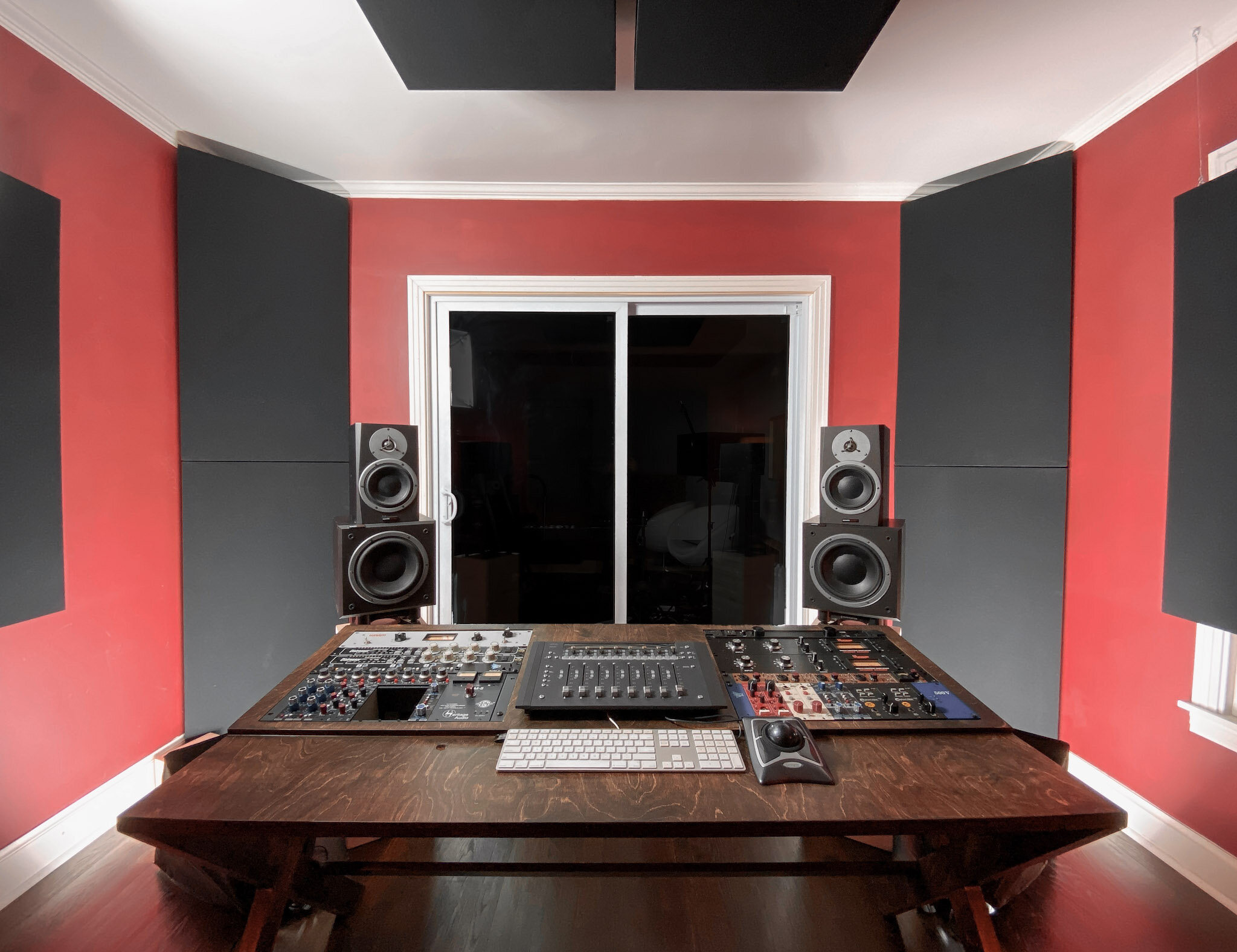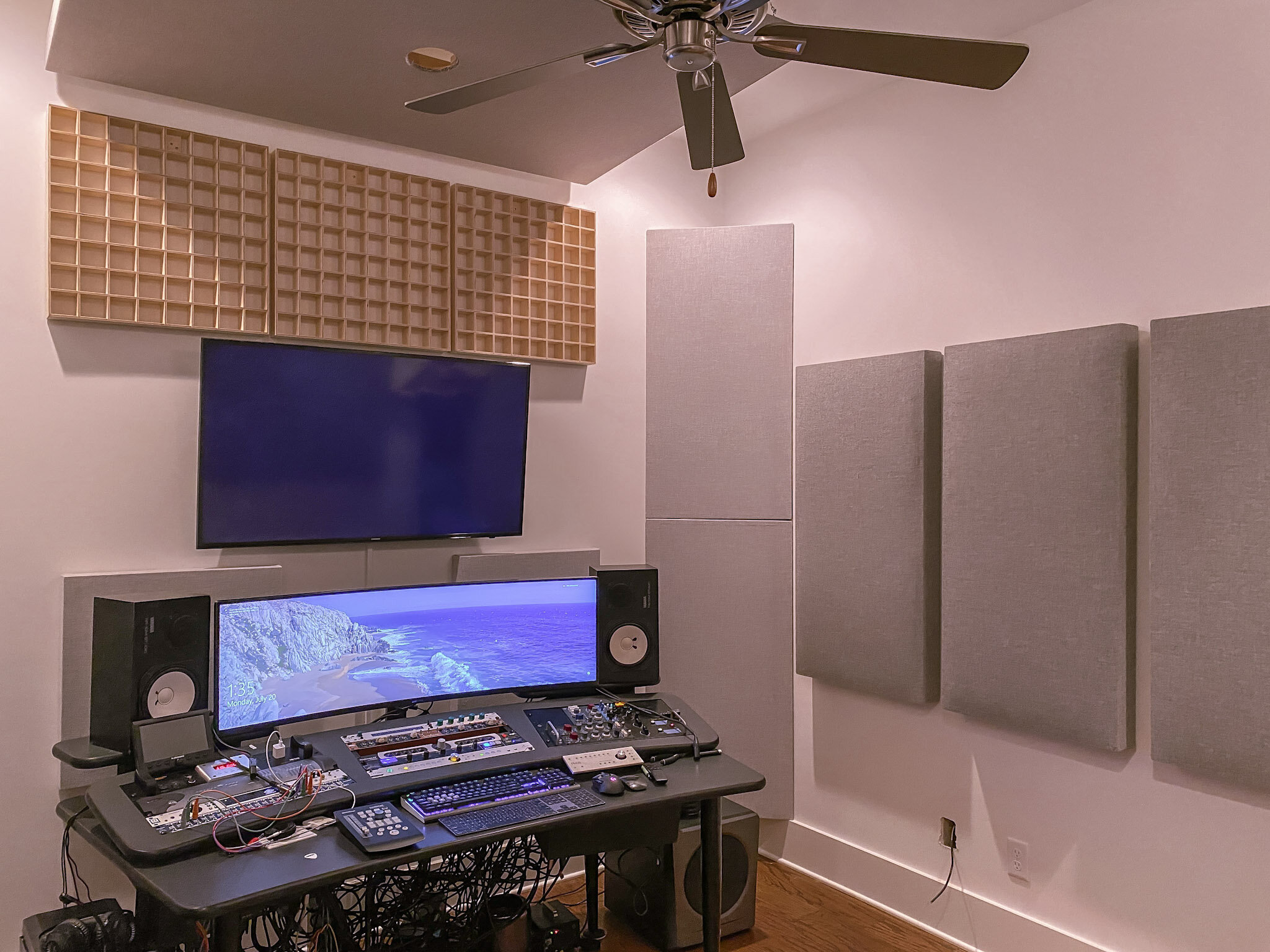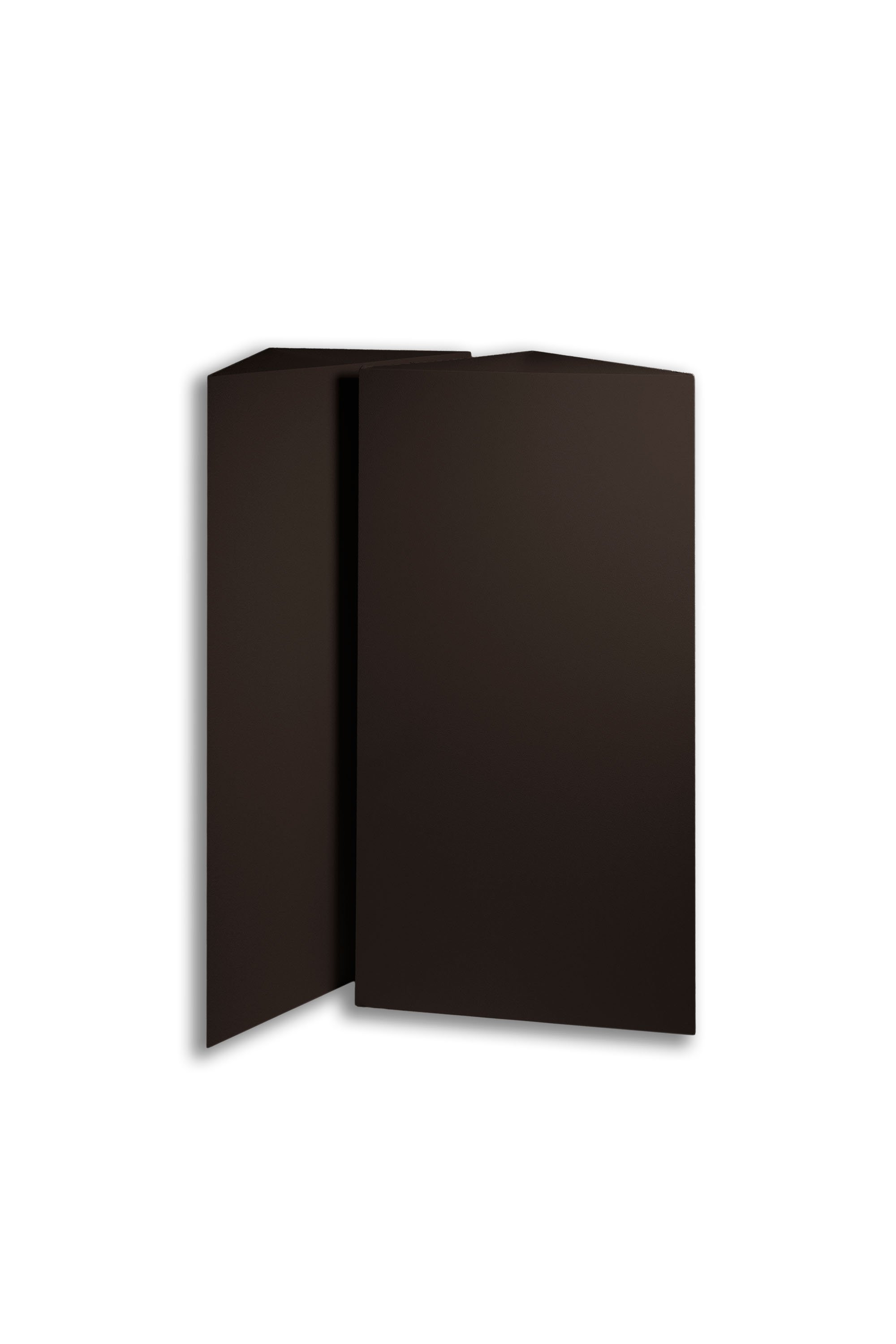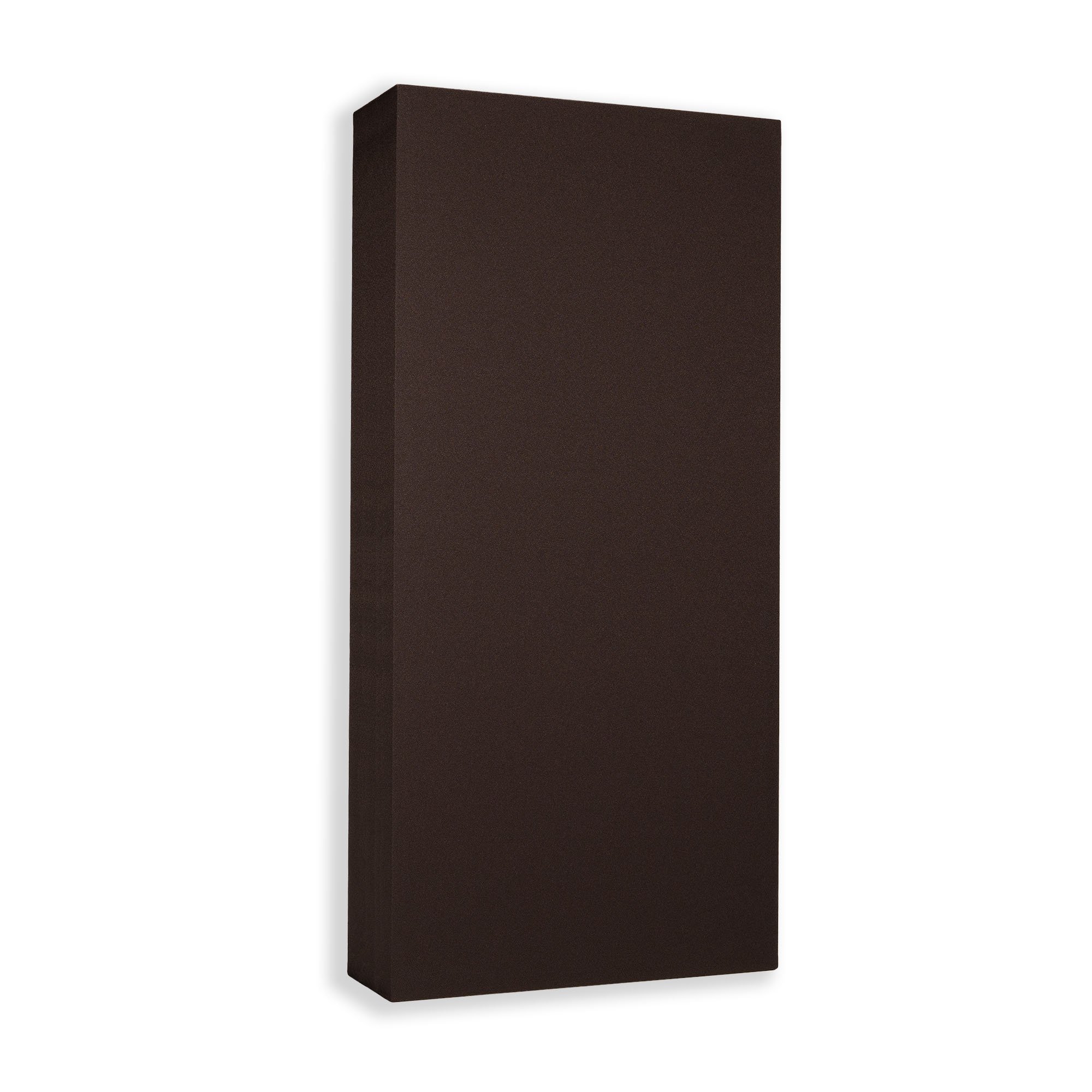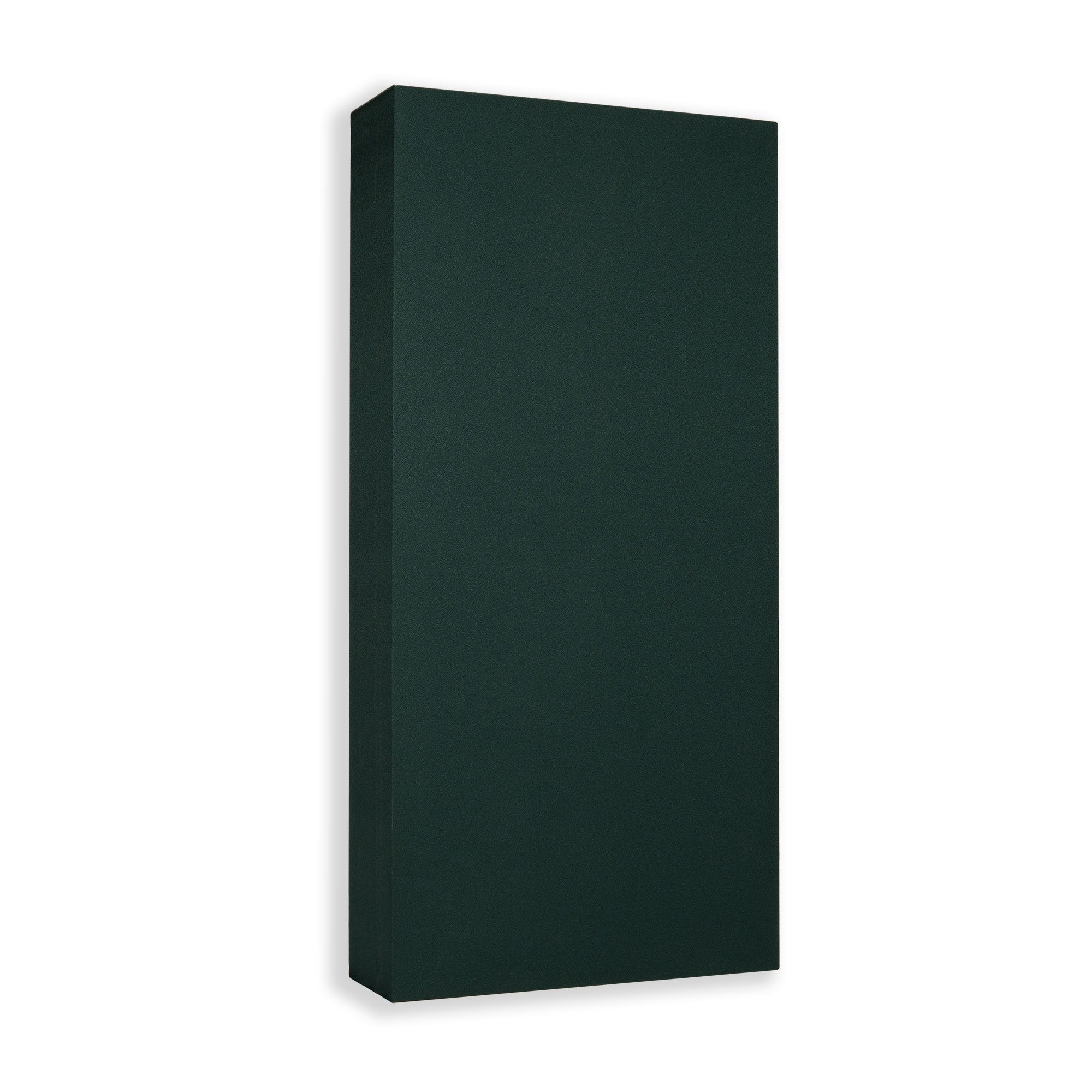The true control freak in the room.
✓ 4.5 inches deep for excellent absorption down to 100Hz
✓ Excels at minimizing SBIR issues and preventing muddy sounding low-mid build-ups
✓ Tested and Certified - Class A fire-Rating ASTM E84
✓ High-quality construction with a robust wood frame for long life
✓ Wide selection of Guilford of Maine fabric colors
✓ Hardware included for quick and easy wall installation
Applications
✓ Recording studios: live rooms, iso booths, and control rooms
✓ Listening rooms: 2 channel or 5.1 HiFi setups
✓ Home theaters
✓ Venues
✓ Houses of worship
Plenty of features
✓ Tested and certified class A fire rated fabric
✓ High-quality construction with a Baltic Birch wood frame for a long life
✓ A wide selection of fabric colors
✓ Hardware included for quick and easy wall installation
Acoustic Panel Performance Measured in NRC
X Axis = Frequency in Hz | Y Axis = NRC rating from 0 - 1
NRC stands for “noise reduction coefficient.” An NRC rating is a percentage grade that represents a specific panel’s ability to reduce noise.
Ratings are typically expressed in decimals from 0 to 1, where 0 represents 0% (meaning the product reflects sound) and 1 represents 100% (meaning the product absorbs sound).
So, for example, if a panel has an NRC rating of .85, that means that roughly 85% of the sound that hits that panel’s surface will stop there.
Ratings can go above 1 because they’re calculated by scoring all of the surfaces of the product, leading to ratings like 1.05.
FAQs
-
Acoustic panels work by absorbing sound energy instead of reflecting it. When sound waves hit the panel’s surface, they pass through the fabric and enter the absorbent core. The material inside traps the energy of the sound waves, converting it into a small amount of heat (through friction), thereby reducing the amount of sound that reflects back into the room.
Depending on the size and purpose of your space, acoustic treatment often involves using panels of various sizes and thicknesses to target specific acoustic issues, and placement is key to ensure echoes, flutter and reverb times are being properly mitigated.
-
This is a very common misconception! Acoustic panels are often incorrectly called “soundproofing panels” or “soundproof panels” but acoustic panels do not soundproof a space. They absorb sound waves within a room to mitigate reflection issues and provide a more balanced and controlled audial environment.
To soundproof a space, you need to implement specific construction methods to add more mass to walls as well as techniques to decouple the shared walls, ceilings, and floors. It’s all about reducing vibration transmission as much as possible!
The differences at a glance:
Acoustic panels improve sound within a room by absorbing sound, thereby reducing echo and enhancing clarity.
Soundproofing blocks sound between rooms with the use of dense building materials, decoupling walls, and closing air gaps to prevent noise from entering or escaping.
Use acoustic panels to make a room sound better inside, and soundproofing to keep sound in or out.
-
There are a few variables at play when determining how many acoustic panels you need for your space, such as:
Room Dimensions
The size of your room plays a major role in determining how many panels are necessary. Larger rooms will naturally require more coverage to achieve effective sound absorption, while smaller rooms can often be treated with fewer panels.
As a general guideline:
Small rooms (under 150 sq ft): 6–10 panels
Medium rooms (150–300 sq ft): 10–18 panels
Large rooms (300+ sq ft): 18+ panels
Ceiling height also matters — high ceilings mean more sound reflection and might require cloud panels or additional wall coverage.
Room Purpose
The function of the room influences how much acoustic treatment you need, and where to place it:
Offices & Conference Rooms: The goal is to reduce echo and improve speech intelligibility. You may only need 30–50% wall coverage.
Home Theaters or Listening Rooms: Balanced absorption and diffusion are key. Front, rear, and side walls are common targets. Bass traps in corners are also recommended.
Recording Studios & Control Rooms: Precision is crucial here. You'll likely need higher coverage — at least 50–75% of reflection points treated, plus bass trapping.
Gyms or Large Open Spaces: These spaces can have long reverb times due to hard surfaces. Treatment focuses on reducing overall echo, often with ceiling baffles or larger format panels.
Budget
How much are you able to spend on treating your room?
Acoustic treatment can get expensive, but if budget is a concern, don’t worry! You can still dramatically improve the sound in your space with a more minimal setup by:
Careful placement of fewer panels — prioritize first reflection points, and wall areas opposite sound sources.
Starting small and expanding — even 4–6 strategically placed panels can make a noticeable difference.
Choosing multipurpose treatments — bass traps that also absorb mid/high frequencies or art panels that double as decor.
No matter what kind of space you have, we’re happy to provide FREE room advice to help you figure out the perfect amount of treatment that works within your budget.
-
The thicker an acoustic panel is, the more effective it is at absorbing low frequencies.
For a space like a busy restaurant or an office where you won’t have a lot of low frequency buildup, thinner panels like our (1.5” thick) Low-Profile Acoustic Panels will shine at mitigating reflections caused by lots of speech.
For a studio space where you need the most accurate listening environment possible, our Broadband panels are a perfect panel at 4.5” thick. Using these in conjunction with our 6” thick Bass Traps will provide excellent absorption across the whole frequency range!
-
Yes! They come with 2” Z Clips standard. You can also get 4” or a Ceiling Mounting kit for an additional cost.
-
Where you place your acoustic panels is very important, especially in studios, where critical listening is the main focus.
The main thing to consider are the reflection points in the room, where sound waves reflect and create an echo or reverb, so placing panels on the following reflection points is key:
Corners: Corners are prone to sound reflections due to the way sound waves bounce off intersecting surfaces.
Side Walls: Placing panels at ear level on the side walls can help absorb early reflections that reach the listener's ears.
Front and Rear Walls: Panels on the front wall behind speakers and on the rear wall can absorb early and late reflections, respectively.
Ceiling: Ceiling panels can reduce reflections from the ceiling, especially in rooms with high ceilings.
You also want to make sure your panels are as even spaced as possible to achieve the best echo reduction.
Don’t place all the panels on one side of the room! Make sure when you place a panel on one wall, there’s another panel being placed on the other wall across from it.
We’re happy to answer any questions you might have about your space. Fill out our FREE Room Advice Form for personalized installation and placement advice. And if you're in the Nashville area, we offer professional installation services too!





